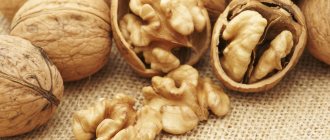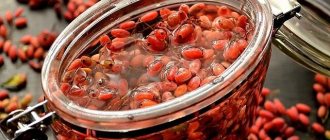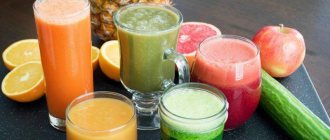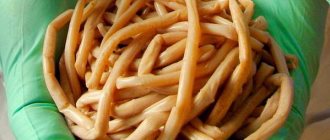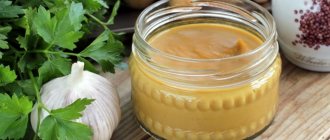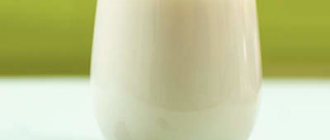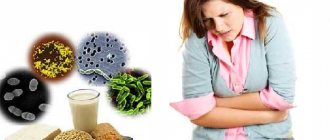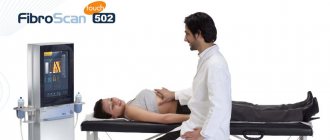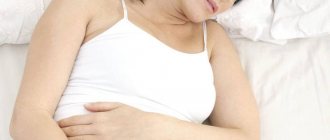Erosive bulbitis is a fairly serious pathology, which is characterized by inflammation of the duodenum. This disease is not very common, but can lead to negative health consequences. Therefore, the first signs of pathology should be a reason to visit a doctor. This disease is detected in 1-3% of people who have undergone gastroscopy due to pain in the upper abdomen.
What is erosive bulbite
The essence of the disease lies in the inflammatory process of the duodenal bulb. This section of the gastrointestinal tract borders the stomach. In addition, the pathological effect is not only on the duodenum, but also on the bile ducts. The disease manifests itself in acute or chronic form. The main symptom of erosive bulbitis is damage to the mucous membrane by bleeding erosions.
As a result of the disease, the acidity of gastric juice increases. Chronic gastritis and Helicobacter pylori infection can also provoke this phenomenon.
The normal digestive process involves alkalization of the resulting food in the duodenum bulb. Then, in this section, the bolus of food is mixed with enzymes and bile, after which it is sent to the intestines.
With dysfunction of this department, the high level of acidity of gastric juice is not neutralized. As a result, the walls of the duodenum begin to become inflamed. The clinical picture is complicated by stagnation of food. The first stage of the disease is defined as superficial bulbitis. If ulcers on the mucous membrane are diagnosed - erosive bulbitis (the next stage).
Traditional medicine in the fight against inflammation
Traditional medicine can only be effective when it is combined with drug treatment prescribed by a doctor. Therapy must be accompanied by a strict diet.
Helpful information! Proper nutrition for bulbitis can be supplemented with porridges and soups prepared using medicinal herbs.
There are many recipes to combat inflammation of the duodenal bulb. The course of treatment is usually two weeks, then take a break of 10 days and repeat again.
Propolis tincture
Propolis tincture eliminates not only the symptoms, but also the inflammatory process itself.
Inflammation and symptoms are treated with propolis-based products
To prepare the product, you need to mix 60 g of propolis with a glass of alcohol. Let the mixture brew for 1.5–2 weeks in a cool, dark place. The resulting tincture is taken before meals in diluted form: 5 ml per 0.5 glass of water. The basic rule for using propolis: at the first signs of relief, do not stop treatment with the tincture! People prone to allergic reactions to insect bites or bee products should be careful when using propolis-based products.
St. John's wort infusion
St. John's wort infusion is a remedy that is highly effective for bulbitis.
An infusion based on St. John's wort is strictly prohibited for pregnant women.
To prepare the medicine, 2 tablespoons of St. John's wort herb are infused in 1 glass of boiling water for an hour. The infusion should be used before meals, 50 g. St. John's wort is prohibited for pregnant women due to the likelihood of miscarriage. It should also not be used during lactation, for people with chronic kidney and liver diseases, or with estrogen-dependent tumors.
Herbal decoction
Herbal decoctions with an astringent effect will also be effective in the fight against bulbitis. These include: rose hips, viburnum, bird cherry, lingonberry, yarrow and rowan. Before using them, you should consult your doctor.
Gallery of “astringent” herbs for decoction
Rosehip Bird cherry Yarrow in dried form
Rowanberry decoction Viburnum
Lingonberry decoction
Mineral water
With inflammation of the duodenal bulb, there may be disruptions in the functionality of the biliary tract, so mineral water is the best way to restore them. On an empty stomach, half an hour before meals, it is recommended to drink a glass of Truskavets or Essentuki mineral water No. 4. The water must be heated a little and the gas released (you can open the bottle in the evening and the gas will come out in the morning). One course of treatment includes 7–10 bottles. If you drink regularly and treat water as a medicine, then a positive result is guaranteed.
Decoction of cucumber, cyanosis and fennel
The Helicobacter bacterium is one of the main causes of the development of bulbitis. That is why doctors recommend using traditional medicine not only to prevent infection by the microbe, but also to treat it.
To prepare a decoction, mix the dried medicinal herbs cudweed, cyanosis, fennel, flax seeds, meadowsweet and chamomile in equal quantities, brew 1 tablespoon of the mixture with half a liter of boiling water in a teapot scalded with boiling water. Leave for two hours, then filter and take 3-4 times during the day, 20 minutes before meals. For prevention, a course of 3 months is carried out in autumn and spring.
Blue cyanosis should not be used on an empty stomach or in case of hypersensitivity to the plant. If you have low blood pressure, you should not use cucumber. Chamomile is not recommended for children under one year old and pregnant women in the first trimester due to the risk of miscarriage. Also, women carrying a child should not use flax seeds in treatment.
A mixture of medicinal herbs for bulbitis (gallery)
Chamomile Meadowsweet Flax Seeds Fennel
Blueberry Swamp Dryer
Infusion of rosehip, red rowan and hawthorn fruits
Supports the entire body, improves the immune system, especially during epidemics of viral diseases. To prepare the product, pour 500 ml of boiling water into a mixture of ingredients (1 tablespoon each) in a thermos. The resulting mixture is allowed to brew overnight. Apply 3 times a day before meals, 1 glass.
For people who have had a heart attack or stroke, suffer from ischemia, increased acidity and blood clotting, rowan is contraindicated. Those who suffer from heart disease, circulatory problems and hypotension should be careful when using rose hips.
Infusion of hawthorn, rowan and rosehip (gallery)
For heart disease, rose hips are used with special care.
Rowan is contraindicated after stroke and heart attack
An infusion with the addition of hawthorn will help strengthen the immune system during bulbitis
Dried calamus root powder
Inflammation may be accompanied by heartburn, which can be relieved by calamus root.
? A teaspoon of powder is taken 3 times a day 20 minutes before meals, washed down with plenty of water. You can replace calamus root with roasted buckwheat or pea powder. It is prohibited for pregnant women, as well as people with hypotension, bleeding, and high acidity of gastric juice.
Pregnant women are strictly contraindicated to use calamus root.
Herb wormwood and chamomile for heartburn with bulbitis
Brew a mixture of chamomile and wormwood, taken 1 teaspoon each, with 1 cup of boiling water. Leave to brew for an hour, then drink half an hour before meals at ? glasses 3 times a day.
Reasons for the development of erosive bulbitis
In addition to the negative impact of the Helicobacter pylori bacterium on the stomach and duodenum, the cause of the disease is the concentration of hydrochloric acid in the gastric juice, which entails a negative effect on the gastric mucosa. There are a number of other reasons that entail the occurrence of erosive bulbitis:
- problems with the nervous system (stress, fatigue, etc.);
- endocrine system problems;
- all kinds of poisoning;
- waste products of various harmful bacteria;
- food tract parasites;
- Giardia and helminths, etc.;
- Crohn's disease.
- the presence of similar diseases in close relatives (mother, father, brothers, sisters).
How is erosive bulbitis classified?
This disease can occur in several forms. Each of them requires emergency treatment prescribed by a specialist. Otherwise, internal bleeding may occur with serious consequences.
| Form of pathology | a brief description of |
| Erosive-focal | The disease manifests itself in the form of single lesions. The main blow falls on the mucous membrane. |
| Catarrhal-erosive | Pathological damage occurs at the cellular level (the epithelium is affected). |
| Erosive-ulcerative | The disease is so dangerous that the muscular structure of the organs is affected. |
| Erosive-hemorrhagic | The pathological process is so aggravated that the vascular system suffers. |
| Erosive drain | The lesions reunite, and a filmy coating forms on the mucous membrane. |
The disease has no gender differences; representatives of different genders and age groups are at risk.
Symptoms of complications
If the focal inflammatory process in the intestinal bulb is not treated, the risk of the disease progressing to an erosive-ulcerative form increases. In this case, it is possible for food debris to enter the abdominal cavity and, as a result, the development of peritonitis. In addition, in many patients, an ulcer in the bulb provokes perforation and bleeding.
Internal hemorrhage can also occur with superficial chronic bulbitis. According to statistics, approximately 10-15% of cases of symptom development have this etiology. The risk of developing an oncological process in the major duodenal papilla increases.
All complications of bulbitis are accompanied by severe pain in the epigastric region, which spreads to nearby areas, decreased appetite, and deterioration in general well-being.
Since bulbitis does not occur with a specific clinical picture, it is impossible to make a diagnosis on your own. Therefore, at the first warning symptoms, you need to consult a doctor and undergo diagnostic measures.
Clinical manifestations
The development of the disease occurs over several years. At the first stages, the disease does not bother the patient at all, but after a while the following symptoms arise:
- pain in the stomach area. They occur an hour after eating, or before bedtime and in the morning when the stomach is hungry. At the same time, pain varies in intensity. If discomfort in the stomach occurs at night, then problems with sleep are observed;
- frequent state of nausea;
- attacks of heartburn;
- a feeling of bitterness in the mouth;
- yellow coating on the surface of the tongue;
- belching (characterized by a bitter and sometimes sour taste);
- increased level of fatigue in the patient;
- general health deteriorates significantly;
- constipation;
- vomiting (blood may be present in the vomit);
- atypical gas formation;
- if the pathology is advanced and internal bleeding has occurred, the stool will have a blackish tint.
If the above symptoms are present, you should not hesitate to make a diagnosis. Timely confirmation of the diagnosis and the necessary therapy prevent serious complications and internal bleeding.
Symptoms characteristic of bulbitis
The inflammatory process goes through several stages of development, each of which has its own clinical manifestations. Taking into account the morphological characteristics, the following degrees of pathology can be distinguished:
- first or weakly expressed: in this case, the normal structure of the mucous membranes is preserved, but foci with lymphocytic and plasmatic infiltration begin to form;
- second or moderate: the surface epithelium is involved in the lesion, the microscopic villi of the mucous membranes are structurally changed;
- third or severe: the villi acquire pronounced deformation, there are areas with pronounced infiltration of lymphocytes and plasma cells, and erosive foci are formed.
At the initial stage of development of the inflammatory process, you can still limit yourself to conservative methods. In this case, a favorable prognosis is observed. At an advanced stage, surgical intervention will be required.
Depending on the form of the disease
There are 2 forms of the disease:
- acute;
- chronic.
In acute bulbitis, there is aching, paroxysmal pain in the gastric region, in the area where the xiphoid process is located. The symptom radiates to the right side and into the abdominal cavity.
The nature of the discomfort with bulbitis is nocturnal, manifesting itself on an empty stomach or after eating.
In addition to pain, other symptoms occur, including:
- nausea and vomiting syndrome;
- increased sweating;
- weakness;
- decreased appetite;
- reflux (reflux of intestinal contents in the opposite direction);
- increase in general temperature.
If a person is nervous, gastric motility and sphincter activity are inhibited. Against this background, the heartbeat accelerates, shortness of breath and tremor appear.
Chronic bulbitis occurs with symptoms such as:
- diarrhea or constipation;
- belching;
- epigastric pain;
- increased gas formation;
- heaviness in the stomach after eating;
- decreased appetite and, as a result, weight.
Severe pain and vomiting are caused by toxic damage to the body due to infection or chemical burn of the bulb.
Depending on the depth of tissue damage
Taking into account the depth of the inflammatory process in the mucous membranes, the following forms of the disease are distinguished:
- superficial, which occurs with pain that worsens after eating, general malaise, a person does not feel full even after eating;
- focal with the formation of single localized oval foci (caused by chemical damage to the mucous membrane or exposure to infectious pathogens);
- catarrhal, in which the mucous membrane swells, turns red, and increased mucus formation occurs;
- atrophic, resulting from the long-term development of the catarrhal process, occurring with thinning of the mucous membranes and disruption of the functioning of the intestines;
- diffuse, in which the affected cells die, fibrotic changes develop, and the risk of developing an oncological process increases.
The shape of the bulbite can only be determined based on the results of instrumental diagnostics.
Depending on endoscopic signs
Endoscopic diagnosis for suspected inflammatory processes is one of the effective methods for identifying the disease. Based on its results, you can determine the type of bulbite:
- erosive
, in which small ulcerative formations form on the mucous membranes, areas with hyperemia are present, vomiting, fever, headache, and general weakness are associated; - hyperplastic
, which is characterized by the proliferation of the surface epithelium, an increase in the density of the mucous membranes due to prolonged inflammation, the appearance of pinpoint lesions or polyps; - hypertrophic
, in which the intestinal mucosa grows, forming benign adenomas and cystic formations; - hemorrhagic
, occurring with damage to vascular branches, the appearance of bleeding ulcers due to deep sedimentation of pathogenic microorganisms or pronounced chemical effects on the organ; - follicular
, accompanied by hyperemia of the mucous membranes, lymphadenitis, enlarged intestines, pain on palpation.
Rarely, bulbitis occurs latently, not accompanied by pronounced clinical manifestations. In addition, a combined lesion is possible, for example, the bulb and pylorus at the same time.
How is the disease diagnosed?
In the diagnosis of erosive bulbitis, an important role is played by collecting a complete history of the disease: during the consultation, the gastroenterologist finds out whether NSAIDs or corticosteroids, alcohol were taken, whether there were signs of bleeding from the gastrointestinal tract; the specialist also determines whether the patient has diseases that can lead to the formation of erosions.
- Laboratory research
. In the general blood test, changes characteristic of anemia (in case of bleeding) are possible. A stool test for occult blood is performed; A breath test for Helicobacter, ELISA or PCR is required. - Endoscopic diagnosis
. Acute erosion of the bulbar part of the duodenum with endoscopic visualization has the appearance of a round or irregularly shaped mucosal defect with fibrinous or hemorrhagic plaque, sometimes with a zone of hyperemia along the periphery. With an exacerbation of chronic erosive bulbitis, the foci are most often multiple, resembling polyps with a defect in the center, covered with plaque, up to 1.5 cm in size. The mucous membrane around the erosion may be hyperemic or unchanged. During remission, erosions of the bulbar region become flatter, plaque disappears from their apex, and they look like somewhat hyperemic formations, slightly rising above the surface of the mucous membrane. - Biopsy
. During EGDS, an endoscopic biopsy is required, followed by a morphological examination of the resulting tissue in order to differentiate it from malignant neoplasms, ulcerated polyps, and benign submucosal tumors. - X-ray
. If it is impossible to perform an endoscopy, radiography with contrast is performed to diagnose erosive bulbitis, but this method is less informative. Erosions look like defects in the mucous membrane of the bulbar region with barium depots in the central zone.
Treatment options
After accurately confirming the diagnosis, the gastroenterologist prescribes a course of necessary therapy. In the case of an acute form of erosive bulbitis, inpatient treatment is indicated.
Patients need to follow a diet, diet and giving up bad habits. Do not ignore the correct daily routine.
If the doctor discovers a serious erosive lesion or internal bleeding is confirmed, then urgent surgical intervention is necessary.
Features of drug treatment
The course of therapy includes several medications, which are characterized by the ability to block pain, eliminate parasites if necessary, normalize the acid balance, and regenerate the affected mucosa.
- Antispasmodics. To eliminate pain, drugs such as “No-Shpa” and “Baralgin” are used.
- Prebiotics. Mandatory when using antibiotics (Acipol, Linex).
- Antacid drugs. These drugs are used to reduce acidity levels (Rennie, Maalox).
- Preparations that stabilize the pH balance (“Ranitidine”, “Omez”).
- Preparations characterized by enveloping properties (“Smecta”).
- Drugs that regenerate the mucous membrane (Methyluracil).
- Gastroprotectors. Medicines that are characterized by a protective effect for the affected mucosa (Ankrusal, Venter).
- To protect the liver, Wobenzym must be included in the therapy complex.
- In case of intoxication, mandatory gastric lavage is necessary. For this, saline solution is used.
- Means for normalizing peristalsis (prescribed individually by a doctor).
- If the disease develops due to regular stress, then it is necessary to take herbal-based sedatives (for example, motherwort tincture).
- A weakened body is advised to take vitamin-mineral complexes.
Therapeutic diet for illness
In the acute course of erosive bulbitis, a therapeutic diet is the main method of treatment and implies a balanced diet in compliance with certain rules:
- Taking liquid and pureed food in fractional portions (5–6 times a day every 2–3 hours);
- Puree soups with rice, oatmeal with the addition of a small amount of butter;
- Kissel or warm milk;
- Soft-boiled eggs.
The above dishes are the established diet for exacerbation of erosive bulbitis. After the body has been relatively restored, white crackers, milk porridge, and lean steamed meat in crushed form can be gradually introduced into the daily diet. After 1.5 months of following the diet and positive changes, doctors allow the consumption of soups with vegetables, white bread, stewed vegetables, cottage cheese, sour cream, and porridge with a viscous consistency. The duration of limited nutrition is about 6 months, since during this period the resulting erosion should heal.
Erosive bulbitis is an inflammatory disease of the duodenum. The pathology is quite rare, but has serious consequences for the body. For diagnosis, it is necessary to conduct a number of specific studies when suspicious symptoms are identified.
Choosing a remedy based on the type of disease
With erosive form
- An infusion of chamomile, marshmallow, St. John's wort and licorice. The components are taken in equal proportions, mixed and ground to the smallest particles. Then pour 2 cups of boiling water into 2 tablespoons of the mixture and leave in a thermos (or in a container tightly closed with a lid) overnight. Strain the infusion in the morning and take it before eating and before bed in the same amount. During the lactation period and during pregnancy, a woman is prohibited from taking licorice; hypertensive patients, people with cirrhosis, hepatitis, renal failure and diabetes should also avoid it ;
- an infusion of oak bark helps reduce the effect of digestive juices on the mucous membrane of the onion. One teaspoon of oak bark (crushed) is poured into a thermos with 200 milliliters of boiling water, then closed and shaken. The mixture is left to brew overnight. Use oak infusion approximately 5 times a day, 1 tablespoon before meals;
An infusion of oak bark is used for erosive bulbitis
- infusion of marshmallow root, Icelandic moss and flax seeds. Carefully grind an equal amount of components and mix well. Then 2 tablespoons of the medicinal mixture are poured into 2 glasses of cold water and left overnight. In the morning, boil the infusion for 5-7 minutes and leave for 2 hours. After the mixture is strained, drink half an hour before meals 5 times a day, three-quarters of a glass (125 g). Marshmallow is prohibited in the first three months of pregnancy, in case of dysfunction of the pulmonary respiratory system and chronic constipation.
Herbs for infusion for erosive bulbitis (gallery)
Licorice (licorice)
St. John's wort
Althaea officinalis Chamomile
How to treat a chronic disease
- Infusion of Icelandic moss and chamomile. To prepare the remedy, take 2 tablespoons of plants and pour 0.5 liters of boiling water. The resulting mixture is placed in a water bath for 30 minutes, then allowed to cool and filtered to remove dry particles. The medicine is drunk 0.5 glasses 3 times a day before meals. The course of therapy is 2 weeks;
The chronic type of bulbitis is effectively treated with an infusion with the addition of Icelandic moss
- honey and plantain juice regenerate mucosal cells, which leads to a rapid recovery. To prepare the product, beat a small bunch of plantain leaves with a blender and filter the resulting pulp through cheesecloth. Then mix 1 tablespoon of liquid honey and 3 tablespoons of plantain juice. Honey is a strong allergen, so children under 3 years of age should be given medicine based on it with caution. If pregnant, you should consult your doctor. Plantain leaves should not be used by people with increased blood clotting or blood clots.
Plantain juice and honey are the best remedy for treating chronic inflammation of the bulb
Follicular form of duodenal bulbitis
- Kissel from flax seeds. Before preparing the remedy, you need to rinse 2 tablespoons of seeds in cold water, then pour 1 cup of boiling water and boil until the mixture takes on a viscous consistency. The medicine is allowed to cool slightly and 2-3 drops of propolis are added for a better effect. Divide the mixture into 3 equal parts and take 3 times a day before meals;
- Garlic enema. It's easy to prepare. To do this, add 2-3 cloves of garlic to 100 milliliters of water and bring to a boil. The garlic broth is cooled and used at a time. For inflammation of the duodenal bulb, the course of treatment for parasites should consist of 7 procedures. After 2 weeks, the course must be repeated. The use of garlic in any form for the purpose of treatment should be agreed with the attending physician, as there are a number of serious contraindications to its use.
- The presence of helminths in the human body can provoke inflammation of the follicular type. Treatment with anthelmintic folk remedies will help not only get rid of parasites, but also speed up recovery for this type of disease. Therefore, it is customary to use against worms:
- cloves (contraindicated for pregnant women and children under two years of age, hypertensive patients, as well as people with gastritis and ulcers. If you are overworked and stressed, it is better to avoid treatment with products based on it);
- centaury (not recommended for patients with gastritis and gastric or duodenal ulcers);
- birch (decoctions are not advisable for women carrying a child, and are also contraindicated for chronic glomerulonephritis, chronic colitis, dysentery and functional renal failure);
- tansy (pregnant women and children are not recommended to be treated with tansy, as well as those suffering from cardiovascular diseases);
- wormwood (can be dangerous during pregnancy and breastfeeding, with low acidity, as well as in acute diseases of the stomach and intestines);
- elecampane (contraindicated for the treatment of those suffering from heart disease and kidney disease, also not used for low acidity, some gynecological diseases and pregnancy);
- mistletoe (decoctions, infusions and other mistletoe-based products are prohibited during pregnancy, hypotension, asthenia, dysfunction of the thyroid gland, disorders of the heart and kidneys);
- oregano (strictly contraindicated for pregnant women, hypertensive patients, patients with heart disease, intestinal or stomach ulcers, gastritis with high acidity).
The above herbs can be used as a mono-collection (that is, brewed separately), but the greatest effectiveness in treatment can be achieved using 3-4 ingredients. To prepare a medicinal folk remedy that will help get rid of worms, you need to mix the necessary herbs in equal proportions. Then pour 2 tablespoons of this mixture with 500 milliliters of boiling water. After the medicinal tincture has been infused for two hours, it should be taken 1 glass four times a day before meals.
Antihelminthic herbs for follicular bulbitis (gallery)
Oregano Mistletoe, Elecampane
Sagebrush
Tansy Birch
centaury
Carrot juice is the best remedy for acute inflammation of the onion
The carrots must be washed, peeled and grated on a fine grater, then squeezed through cheesecloth. Take the juice 3 times a day 30–40 minutes before meals for ? glasses. Carrot juice should not be drunk if you have allergies, diabetes, duodenal and stomach ulcers, heartburn or high acidity of gastric juice.
Carrot juice is a good remedy for acute bulbitis
With atrophic bulbitis
- A mixture of raw pumpkin, grated apple and a small amount of honey is considered the most popular recipe in the fight against this type of illness. Pumpkin juice should not be used for diarrhea, gastritis with low acidity and stomach problems. Apples should not be eaten if you have bloating, individual intolerance, or during an exacerbation of duodenal and gastric ulcers;
The basic rule: do not eat apple-based products on an empty stomach.
Pumpkin and apples are indispensable in the treatment of atrophic bulbitis
- Potato juice (freshly squeezed) is taken 20 minutes before meals for ? glasses several times a day. The course of treatment is 2 weeks. It is important to remember that the drink loses its beneficial properties after just 10 minutes; storing it in the refrigerator is not recommended.
Potato juice retains its beneficial properties for only 10 minutes
Important! All medicinal herbs that are used in folk medicine must be dried. If you don’t have any component of the recipe at home, you can find any of the herbs at the pharmacy.
